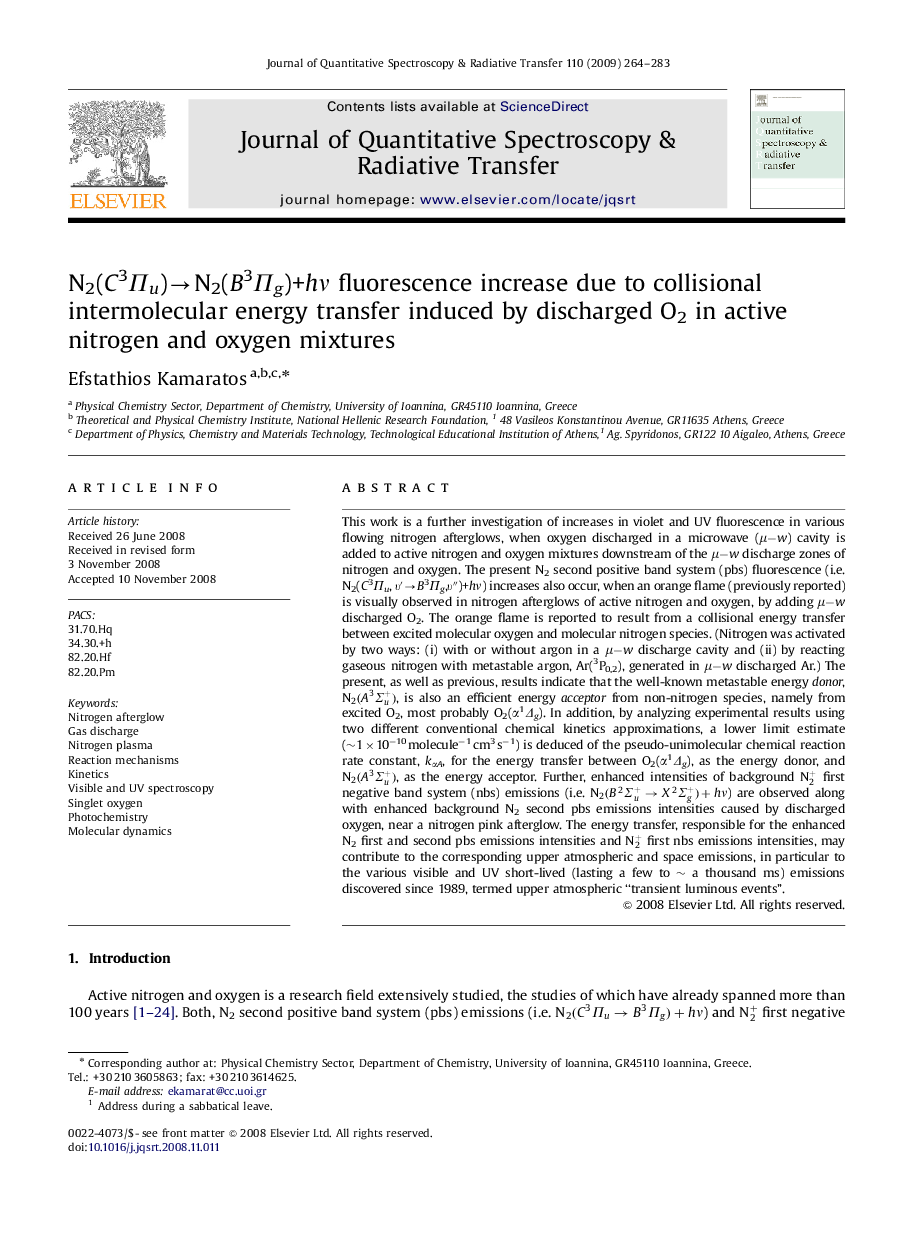| کد مقاله | کد نشریه | سال انتشار | مقاله انگلیسی | نسخه تمام متن |
|---|---|---|---|---|
| 5430155 | 1508709 | 2009 | 20 صفحه PDF | دانلود رایگان |

This work is a further investigation of increases in violet and UV fluorescence in various flowing nitrogen afterglows, when oxygen discharged in a microwave (μâw) cavity is added to active nitrogen and oxygen mixtures downstream of the μâw discharge zones of nitrogen and oxygen. The present N2 second positive band system (pbs) fluorescence (i.e. N2(C3Î u, Ï â²âB3Î g,Ï â³)+hν) increases also occur, when an orange flame (previously reported) is visually observed in nitrogen afterglows of active nitrogen and oxygen, by adding μâw discharged O2. The orange flame is reported to result from a collisional energy transfer between excited molecular oxygen and molecular nitrogen species. (Nitrogen was activated by two ways: (i) with or without argon in a μâw discharge cavity and (ii) by reacting gaseous nitrogen with metastable argon, Ar(3P0,2), generated in μâw discharged Ar.) The present, as well as previous, results indicate that the well-known metastable energy donor, N2(A3Σu+), is also an efficient energy acceptor from non-nitrogen species, namely from excited O2, most probably O2(α1Îg). In addition, by analyzing experimental results using two different conventional chemical kinetics approximations, a lower limit estimate (â¼1Ã10â10 moleculeâ1 cm3 sâ1) is deduced of the pseudo-unimolecular chemical reaction rate constant, kαA, for the energy transfer between O2(α1Îg), as the energy donor, and N2(A3Σu+), as the energy acceptor. Further, enhanced intensities of background N2+ first negative band system (nbs) emissions (i.e. N2(B2Σu+âX2Σg+)+hν) are observed along with enhanced background N2 second pbs emissions intensities caused by discharged oxygen, near a nitrogen pink afterglow. The energy transfer, responsible for the enhanced N2 first and second pbs emissions intensities and N2+ first nbs emissions intensities, may contribute to the corresponding upper atmospheric and space emissions, in particular to the various visible and UV short-lived (lasting a few to â¼ a thousand ms) emissions discovered since 1989, termed upper atmospheric “transient luminous events”.
Journal: Journal of Quantitative Spectroscopy and Radiative Transfer - Volume 110, Issues 4â5, March 2009, Pages 264-283